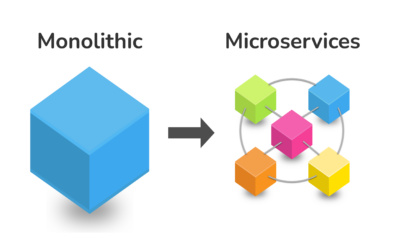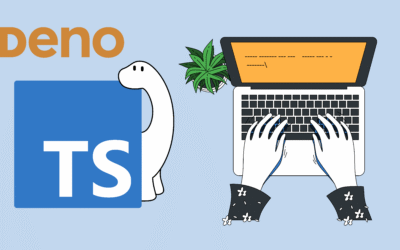Table of Content
The Spring framework is an open source Java application framework, thus the name ‘Java Spring framework.’ This framework traces its history to the work of Rod Johnson, who introduced it to the world in 2002. Initially developed on the principles of dependency injection (DI) and inversion of control (IoC), the framework has grown by leaps and bounds since then. It now includes a selection of modules that provide transaction management, authentication, messaging, testing and other services. Java Spring is a popular alternative to Enterprise JavaBean (EJB).
In fact, the vast majority of companies prefer the Java Spring framework for building Java enterprise applications. Why?
Easy Integration with Java Enterprise Edition (Java EE) Platform Components
One of the main reasons why most companies prefer the Java Spring framework over the competition is because it integrates seamlessly with the vast majority of Java EE components used in the enterprise world. Compatible components include the well-known WebSocket application programming interface (API), which is used for web apps that require seamless connections between geographically disparate entities to work – think Office 365-style collaborative tools, Slack-like chat apps, and so on.
Other popular Java EE components that easily integrate with the Java Spring framework are the Servlet API, which is essentially a Lilliputian web server that is used to extend the capabilities of regular servers; the JavaScript Object Notation (JSON) Binding API, a binding layer for converting Java objects to JSON documents and back again; and the Java Persistence API, which is used to map Java objects to database tables and vice versa. Java concurrency utilities, a collection of packages that developers use as building blocks for creating concurrent classes or applications, is also compatible with the Java Spring framework.
Excellent Compatibility with Different Java Development Kit (JDK) Versions
Another reason the Java Spring framework is such a hit with companies is because it is compatible with different JDK versions. This extensive compatibility means the framework supports a wide variety of possible scenarios. Want to run legacy web apps on servers with an upgrade cycle that is controlled by other parties? No problem. Interested in developing standalone apps that do not require a server? Java Spring’s got you covered as well. Unsurprisingly, the Java Spring framework is backwards compatible with older JDK versions, making it a great choice for developers looking to maintain legacy enterprise applications and software libraries.
Excellent Usability of Java Spring
Yet another reason why Java Spring is the framework of choice for such a large number of companies is because of its excellent usability. This benefit is down to a combination of factors.
Java Spring offers multiple configuration options, making it a cinch for developers to adapt the framework to their specific needs. And because it is also highly modular, developers have the option of working with specific modules or the entire framework, depending on the task at hand. Java Spring also supports test driven development (TDD), allowing developers to painlessly test applications built on top of the framework. Testing is made even easier by the fact that framework applications consist mostly of JavaBean-style Plain Old Java Objects (POJOs).
Speaking of POJOs; because Java Spring already supports these objects, it is not necessary to use enterprise containers such as application servers, for example; developers can simply utilize the more robust servlet container instead. This support for POJOs is the reason why the framework is so lightweight; the basic version weighs in at just 2 megabytes.
Java Spring has been around for a while, so many of the kinks that hobble younger frameworks have been straightened out. Modules are generally well tested and widely adopted. And as you would expect for a framework of its age and popularity, it’s backed by a large community, which means developers can easily find solutions and advice.
Lower Cost of Ownership
Java Spring is also popular in the enterprise space because of its comparatively lower cost of ownership. Out of the box support for standard Java EE specifications such as Security, Session Management, and Dependency Injection; a large selection of road-tested modules for a variety of use cases; easy configuration of resources; a standard framework for maintaining custom application architecture for a range of designs, among other factors, translates to significantly lower development and maintenance durations and costs.
Closing Thoughts
It is not surprising that a large number of companies use the Java Spring framework. It is lightweight, battle tested, and flexible. The framework takes care of incidentals so that developers can focus on core tasks. Java Spring also helps cut down development and maintenance costs, significantly lowering the cost of ownership. Other reasons for the popularity of the framework include out-of-the-box support for Java EE components, backwards compatibility with legacy JDK versions, and great community support. If you have been looking for a Java framework for your company, Java Spring may be exactly what the doctor ordered.












I’m not sure I buy all the fuss about Java Spring being the best framework out there. Don’t get me wrong, it’s solid, but let’s be real – most companies are just trying to keep up with the latest and greatest. I’ve worked in a few big shops and trust me, if they could afford it, they’d be using something like AWS consultancy services to handle all their backend needs. Java Spring might be lightweight and flexible, but it’s still a lot of work for devs who are already juggling multiple projects.
I completely agree! The seamless integration with Java EE components is indeed one of the major reasons why Java Spring Framework stands out. I’ve worked with it on a few projects and can attest to its versatility, especially when used with EJBs in Java EE environments.
I must say, I thoroughly enjoyed this blog post on the Java Spring framework! However, I do have a few questions to clarify my understanding. You mention that Java Spring supports test-driven development (TDD) through its POJOs, but how does it handle more complex stateful applications? Wouldn’t these scenarios require additional configuration and perhaps even the use of an application server? Can you elaborate on this point further?
Best regards,
A curious software engineer
I think there’s been some misinterpretation here. POJOs aren’t just limited to stateless applications. They can handle complex stateful apps too. In fact, one of the advantages of using Java Spring is that it allows developers to work with stateful objects without having to deal with the overhead of an application server. The framework takes care of the complexities, making it easier for devs to focus on coding. That being said, some configurations may still require additional setup, but that’s not specific to Java Spring. It’s a general requirement when dealing with complex stateful apps.
The lack of clarity on stateful apps in your question suggests you haven’t done enough research prior to commenting. Java Spring is more than capable of handling complex stateful applications without needing an application server or extra config. Don’t forget, cloud advisory services can help you scale even the most complex projects!
I understand your concern about handling complex stateful applications with Java Spring. While it’s true that additional configuration may be required in such scenarios, the framework still offers a lightweight alternative to traditional application servers. In fact, many developers opt for cloud consulting services to leverage the scalability and flexibility of cloud infrastructure, which can help mitigate the complexities of stateful applications.
Best regards,
The blog post discusses Java Spring’s support for test-driven development (TDD) through its Plain Old Java Objects (POJOs). However, you’re right to question how it handles complex stateful applications.
Java Spring doesn’t necessarily require additional configuration or an application server for complex applications. Its modularity allows developers to work with specific modules or the entire framework as needed. This approach can be beneficial in terms of resource management and development efficiency.
A good aws consultancy would likely recommend a similar modular approach when deploying large-scale enterprise applications, which could further optimize resource utilization.
Best regards,
I’m not convinced by the claim that Java Spring can handle complex stateful applications without additional configuration or an application server. The excerpt mentions POJOs and their support for TDD, but it doesn’t provide enough information on how this applies to more complex scenarios. In my experience, even with a lightweight framework like Spring, you still need to consider the requirements of your application and configure accordingly.
Perhaps someone who has worked with AWS consultancy services can provide more insight into how they approach stateful applications in Spring?
Best,
A software engineer
Honestly, I don’t see anything in that excerpt that specifically addresses stateful applications. It talks about POJOs and TDD, but doesn’t go into detail on how to handle complex scenarios. I’m not impressed by the claim that Java Spring can handle these without additional configuration or an app server. My experience is that even with a lightweight framework like this, you still need to consider the requirements of your application and configure accordingly.
The fact that it integrates seamlessly with Java EE components doesn’t necessarily mean it can handle complex stateful apps out of the box. Maybe someone who has worked with cloud computing services can provide more insight into how they approach stateful applications in Java Spring?
I’m no expert, but it seems like Java Spring can handle complex stateful apps through its modular design and POJOs. However, if I recall correctly from the article, it’s suggested to use a servlet container instead of an app server for these scenarios, as it’s more lightweight. If you’re looking for cloud advisory services, you might want to explore those options further.
I’m not surprised Java Spring is preferred! It’s modular design and lightweight architecture make it perfect for complex projects. Plus, with cloud advisory services becoming more important, having a robust framework like Java Spring definitely helps devs hit the ground running 🚀
I’m totally with u on this 1! 🤩 integratin’ w/ java ee components is a total game-changer! havin used spring in my prev roles, i can attest to how seamless it is w/ servlet api, json binding api & jpql! even worked w/ concurrency utils in one of our aws mktg campaigns 🚀
I completely agree with your assessment! I’ve worked on several projects utilizing Java EE and can attest to its robustness. However, I’d like to add that one key advantage of Spring is its ability to adapt to various deployment environments, including cloud platforms like AWS and Azure. This flexibility makes it a great choice for companies looking to scale quickly.
I appreciate your in-depth comparison! However, some points could benefit from clarification, perhaps with the help of an AWS consultancy.
You make a valid point about potential areas for clarification. Perhaps engaging an AWS consultancy could provide additional insights to supplement the existing information.
I’d love to hear more about how cloud advisory services factor into this discussion!
I completely agree with the author’s assessment of Java Spring’s compatibility and usability. However, I’d like to add that scalability is another key advantage of using Java Spring in enterprise environments. For instance, leveraging AWS consultancy services can help companies optimize their infrastructure costs while maintaining high application performance. Additionally, Java Spring’s modular design makes it easier to integrate with other services and tools, further enhancing its appeal to large-scale deployments.
Honestly, I’m not blown away by this post 🤔…I mean, compatibility with different JDK versions is cool and all, but it’s not exactly revolutionary news… especially when you’ve got the likes of AWS consultancy handling the heavy lifting!